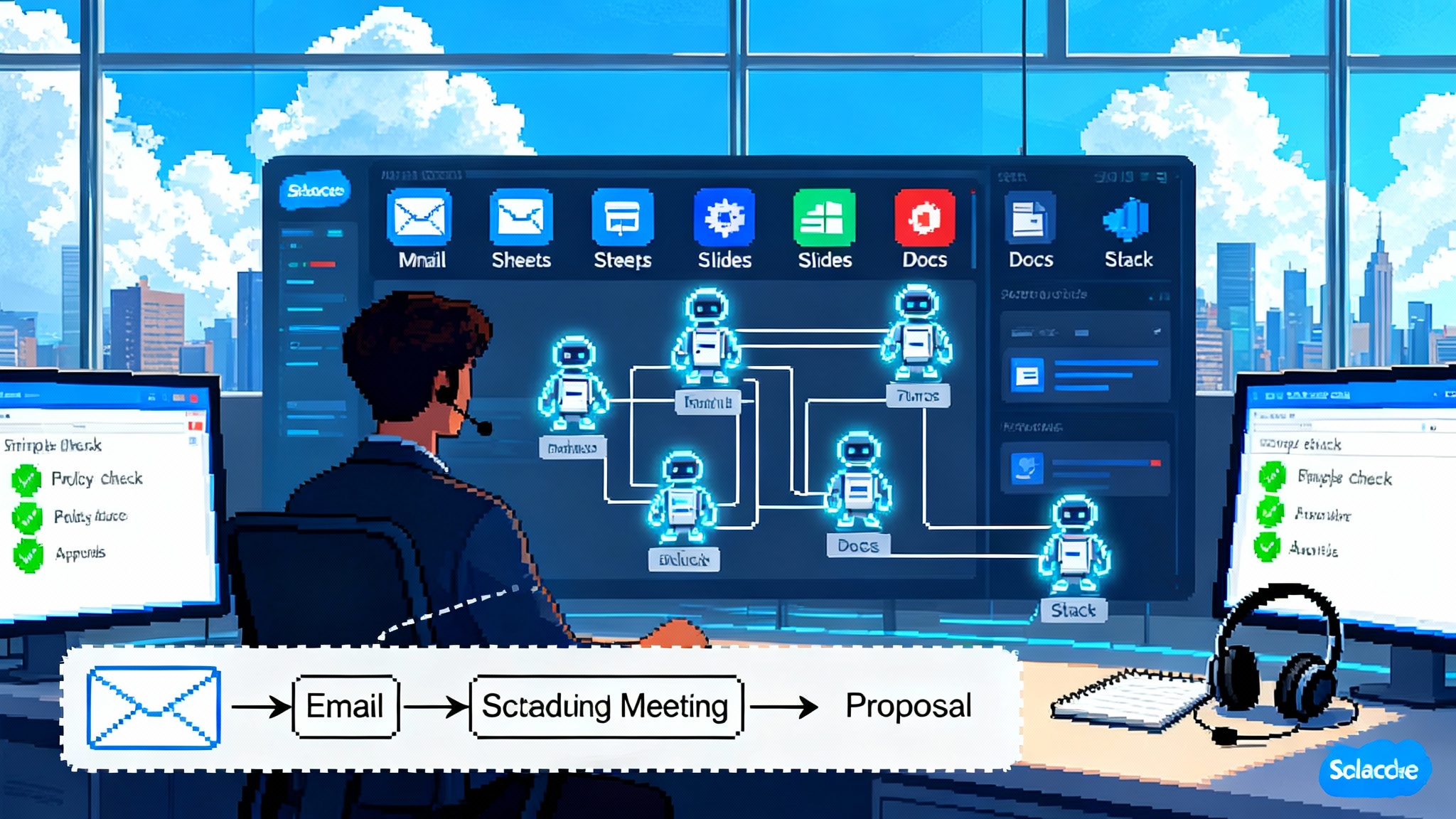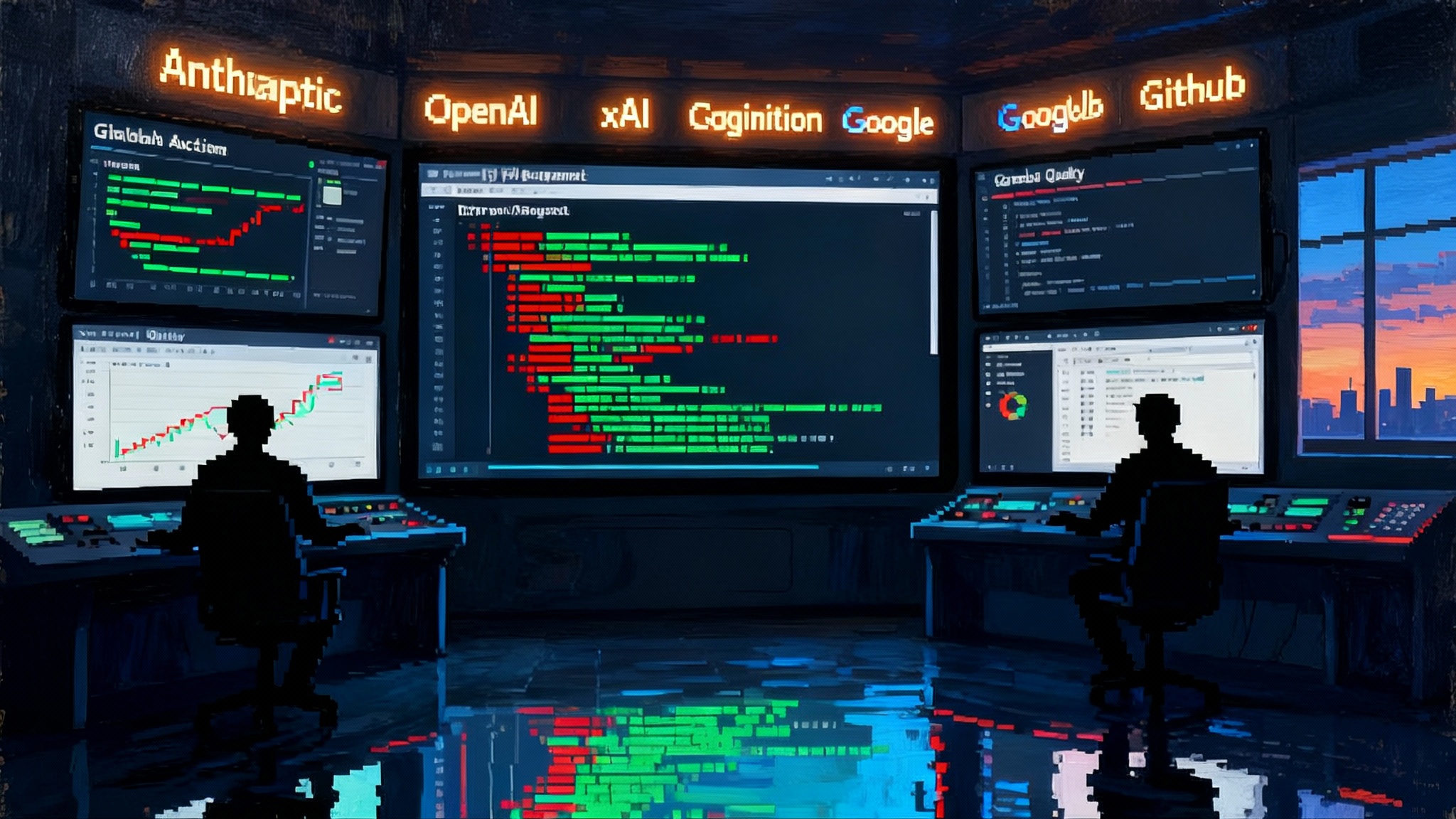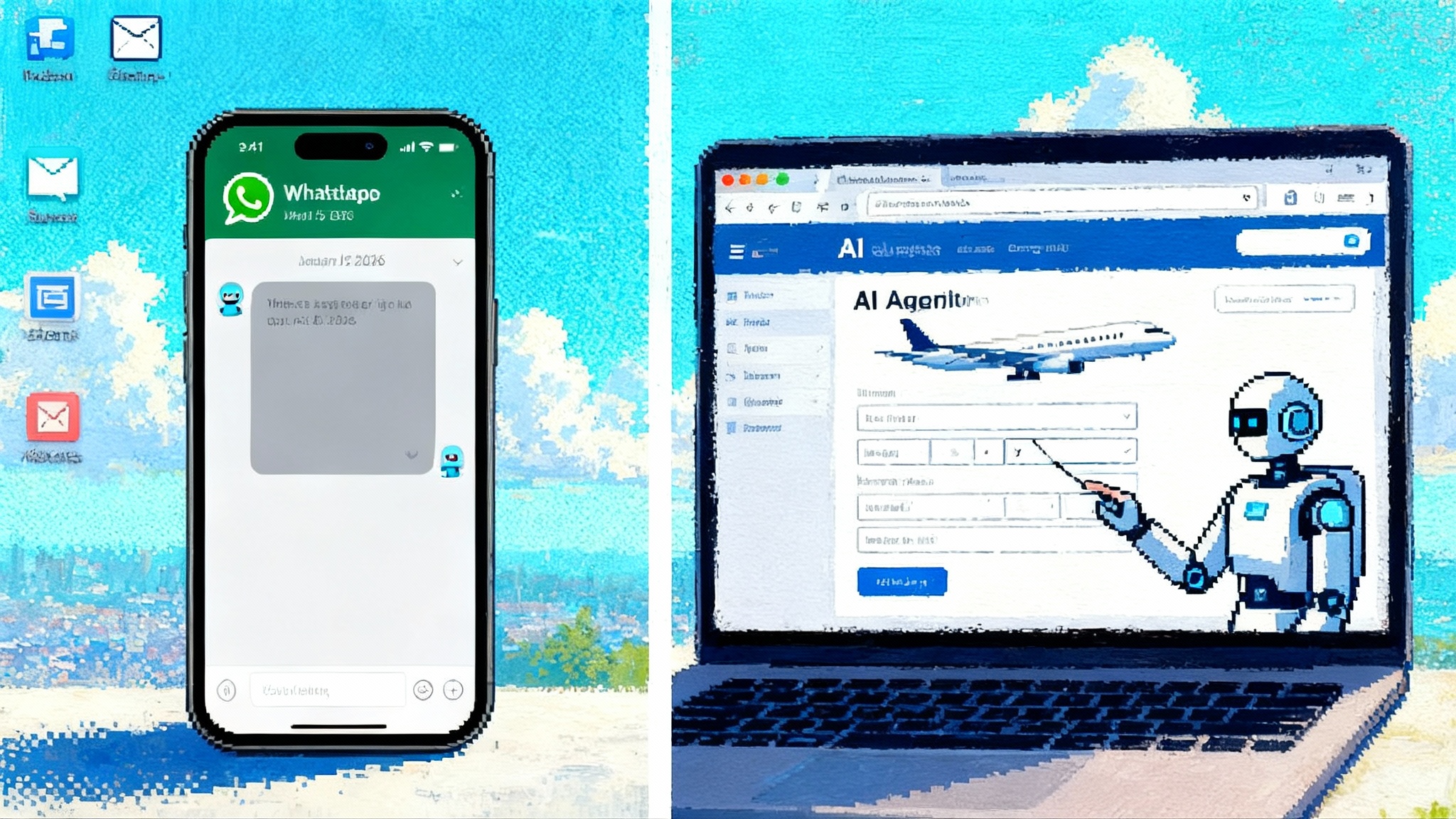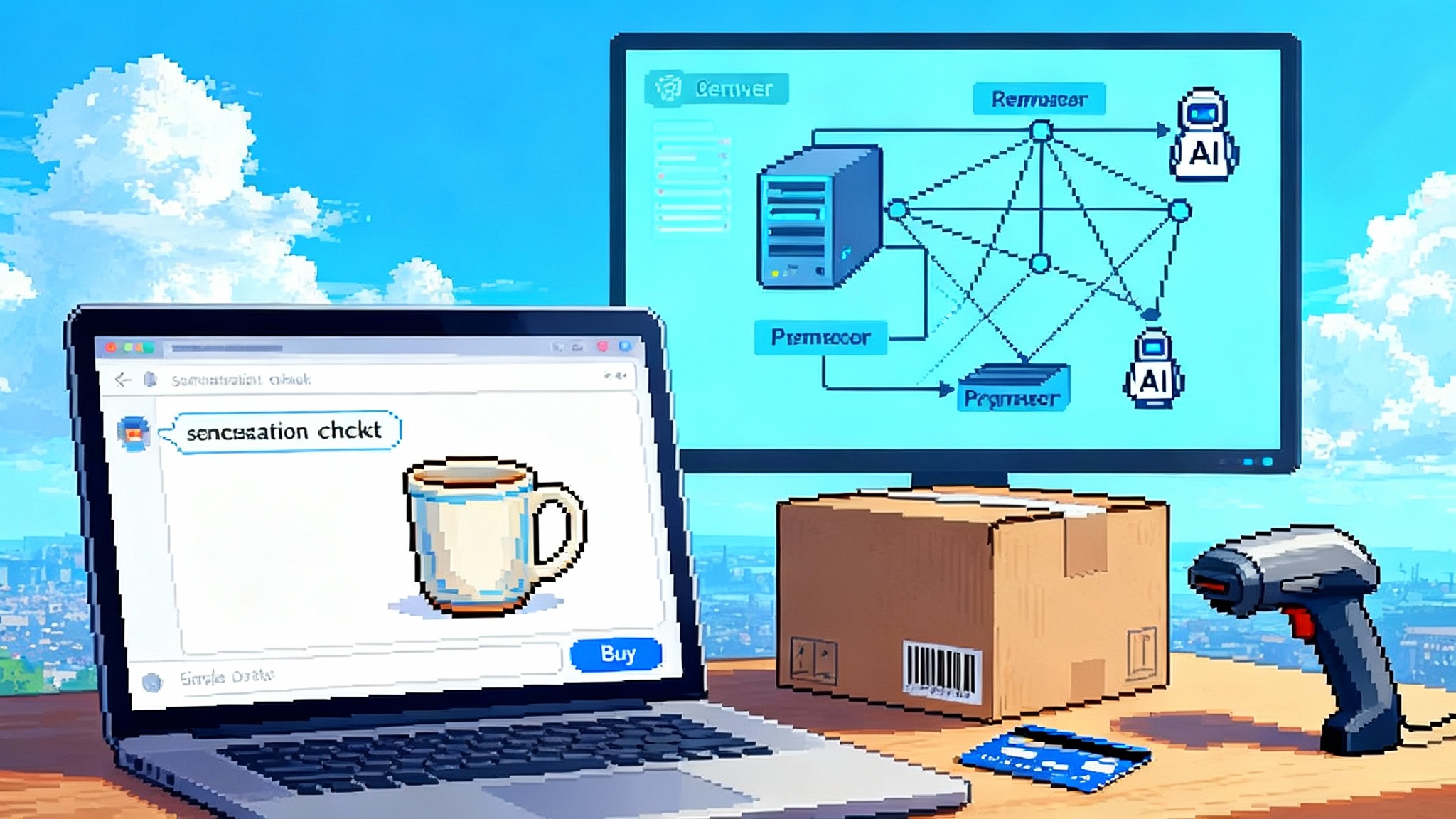Claude Agent Skills signal the modular turn for real agents
Anthropic’s Agent Skills turn general chatbots into composable, governed capabilities. This analysis shows how Skills reshape developer workflow, operations, and business models, plus what to expect over the next year.

The news, and why it matters
Anthropic is rolling out Agent Skills, a system that lets Claude load portable folders of instructions, scripts, and resources on demand. In plain terms, a Skill is like a labeled toolbox that Claude opens only when the job requires it. Anthropic positions Skills as a way to add organization-specific know‑how to Claude without retraining the model, and to do it in a way that is sharable, versioned, and governed. You can see this shift in Anthropic’s own description of Skills as folders that Claude loads when relevant, not as new models or prompts that run all the time. The first time you encounter this, it feels less like another model release and more like a package format for expertise, a move that changes how teams build and ship agents. That direction echoes why orchestration becomes the battleground and aligns with the need for an interop layer for real agents. To ground this in a primary source, read the official description of how Skills work in Claude.
At the same time, OpenAI has introduced AgentKit, a suite for building, evaluating, and deploying agents that emphasizes versioning, governance, and a connector registry. The market is coalescing around a common direction: agents are being decomposed into smaller, auditable capabilities that can be assembled for each job. You can see this direction in OpenAI’s description of AgentKit components like Agent Builder, Evals for Agents, and a Connector Registry, all of which echo the push to modularize capability and control. The overview at OpenAI AgentKit overview shows how these building blocks fit together.
Takeaway: We are moving from monolithic assistants that try to do everything to composable stacks of Skills and policies that do the right thing for a given task, with clearer boundaries and better telemetry.
What a Skill really is
A Skill is a structured package. Think of it as a folder with:
- An intent and scope: what the Skill is meant to do and when to apply it.
- Instructions: the authoritative guidance that encodes how your organization performs this task.
- Scripts or tools: code snippets, templates, and command sequences that can be invoked by the agent.
- Resources: reference files such as brand guidelines, data dictionaries, regulatory checklists, or example artifacts.
- Policy and permissions: what the Skill is allowed to access, which credentials to use, and what guardrails apply.
- Version and provenance: who built it, when it changed, what tests it passed, and where it is allowed to run.
If you have ever used container images or libraries, this will feel familiar. The important shift is that the unit of reuse is no longer only a prompt or a model; it is a governed bundle of capability that the agent can load, apply, and unload.
How Skills change the developer workflow
Developers and operators have been juggling prompt templates, function-calling code, and ad hoc documentation. Skills reorganize this into an artifact lifecycle that looks more like modern software engineering.
- Packaging organization-specific know‑how
-
Example: Your brand studio maintains a 40-page style guide, a set of presentation templates, and a naming convention for product lines. Instead of scattering these across shared drives and wiki pages, the team packages them as a Brand Skill. The Skill includes a style linter for slide decks, a set of templates for executive briefings, and a short instruction file that encodes the rules that truly matter. When marketing asks Claude to produce a board deck, Claude loads the Brand Skill, applies the templates, runs the linter, and returns a draft with the correct tone and formatting.
-
Example: The finance team keeps a recurring reconciliation process with a dozen steps, each with a link to a data source and a specific cross check. As a Finance Reconciliation Skill, those steps become a repeatable, auditable script. Claude runs it on a schedule, flags variances, and files a summary with links to the checks it performed.
- Versioning as a first-class feature
-
Skills can carry semantic versions, change logs, and migration notes. If the legal team updates the approved language for privacy disclosures, you publish version 1.4.3 of the Legal Disclosure Skill. The change becomes visible to every dependent workflow. If a regression appears, you can roll back to 1.4.2 and attach the failed test to the release.
-
This turns prompt management from a brittle, undocumented practice into something tractable. The unit that changes is the Skill, not a scattered set of prompt fragments.
- Sharing without losing control
-
Organizations install Skills into a catalog that the agent can discover. Teams can share read-only Skills across departments, or publish Skills to a private marketplace for business units to adopt. Fine-grained permissions keep sensitive scripts and credentials scoped to the teams that need them.
-
Practical detail: a Skill-level manifest can define data access scopes, acceptable tools, and approval steps for high-risk actions. This lets the security team approve the Skill once, rather than re-approving every new prompt that might trigger those actions.
- Testing and continuous delivery for agent behavior
-
Developers write task suites for Skills, not just single-shot prompts. For a Research Synthesis Skill, the suite might include: messy input pages, structured papers, contradicting claims, and specific citation requirements. Passing the suite becomes the release gate.
-
A continuous integration pipeline runs smoke tests every time the Skill changes. If a new script breaks a required behavior, the build fails. This keeps agent behavior legible as the Skill evolves.
The new operations model: policyable capabilities
Skills refract operations through a cleaner lens. Instead of granting a general assistant broad access to data and tools, you grant precise capabilities at the Skill level.
-
Scoped permissions: A Procurement Skill can access supplier records and a purchase order system, but it cannot view human resources files. A Refund Skill may issue refunds up to a defined limit, and must request approval for anything higher.
-
Safer tool access: Credentials live with the Skill in a vault, not inside prompts. The agent receives short‑lived tokens when it loads the Skill, and those tokens expire after use. This minimizes the blast radius of a compromised session.
-
Auditable actions: Every Skill call logs the inputs, tools used, checks applied, and resulting artifacts. When compliance reviewers ask how a claim was processed, the system can replay the Skill run.
-
Policy composition: You can attach policy modules to Skills. A Redaction Policy hides personal data before any Skill receives text. A Data Residency Policy pins storage and processing to approved regions. These policies are reusable, and you apply them to many Skills at once.
This pattern pairs naturally with enterprise safeguards like guardian agents and AI firewalls. OpenAI’s AgentKit reinforces the same approach with its evaluation and connector registry features. Rather than dropping a general agent into production, teams bind agents to registries and test suites. The effect is similar: the platform becomes a gate that checks, logs, and limits capability at the edges.
The business model: from assistants to marketplaces of Skills
When capabilities can be packaged and governed, distribution changes.
-
Enterprise catalogs: Companies will curate internal catalogs of Skills. A retail chain might host a Customer Triage Skill, a Returns Policy Skill, a Fraud Triage Skill, and a Visual Merchandising Skill. Each has owners, metrics, and approvals. Business units install stacks of these Skills to power workflows without re-implementing the underlying logic.
-
Vendor Skills: Independent software vendors will ship Skills that wrap their products. A procurement platform can offer a Vendor Onboarding Skill that encodes its best practices and connects to its application programming interface. Customers install the Skill and get a working, governed integration without bespoke glue code.
-
Vertical marketplaces: Expect industry-specific Skill stores that sell validated capabilities, such as a Health Claims Coding Skill with preloaded guidelines, or a Mortgage Underwriting Skill with policy packs for specific states. Validation will focus on data handling, security controls, and measured task performance, not just copywriting finesse.
-
Pricing: Skills will carry usage charges that blend software subscription with agent execution costs. Some will be metered by tasks completed, others by time saved or cases resolved. Vendors will publish reference task suites and expected return on investment based on measured performance.
-
Procurement and compliance: Buying a Skill will look more like buying a managed integration. Teams will ask: what data does it touch, what policies does it enforce, how is it monitored, and what is the rollback path.
How Skills compare to OpenAI AgentKit and Google’s thinking models
-
Anthropic Agent Skills: Focused on a portable artifact that Claude loads when relevant. The emphasis is on composability, scoped access, and packaging organizational knowledge. This resonates with teams that want to move from prompt notebooks to governed capability bundles.
-
OpenAI AgentKit: A platform suite that wraps the full life cycle. It includes a visual Agent Builder, evaluation tooling, and a connector registry. It answers the question: how do we design, test, and ship multi-agent workflows with enterprise controls. Where Skills define the what of capability, AgentKit supplies a lot of the how for building and supervising those capabilities in production.
-
Google’s thinking models: Google has pushed models that show stronger reasoning and step-by-step planning. This approach improves the brain of the agent. But without a packaging layer, raw reasoning can still act like a generalist. The industry needs both: models that reason well, and a way to bind that reasoning to governed capability units. That is what Skills and similar artifacts provide.
The key point is complementarity. Better thinking helps, but packaging and governance determine whether that thinking becomes safe, repeatable value inside a company.
The next 12 months: what to expect
- Skills as the unit of distribution
Skills will become the standard artifact that travels between teams, vendors, and environments. Expect Skills to show up in developer portals, service catalogs, and procurement workflows. Continuous integration pipelines will lint Skill manifests, run task suites, and block deployments that violate policy.
- Evals shift from benchmarks to task suites
Public benchmarks remain useful, but enterprises will define success by end-to-end task completion with quality and safety metrics attached. A Customer Email Skill will be graded on resolution rate, regulatory compliance, and time to draft, not just language quality scores. Teams will share anonymized suites that capture realistic messiness, such as conflicting requests and partial data.
- Enterprises pilot skill stacks for measurable return on investment
Rather than a single assistant, departments will adopt small stacks of Skills that map to a workflow. A contact center might combine Triage, Knowledge Search, Refund Policy, and Escalation Skills. The pilot will track clear metrics: handle time, first contact resolution, refund accuracy, and customer satisfaction. Finance might track close cycle duration and error rates. Product engineering might track issue triage time and pull request throughput.
- Policy gets productized
Expect off‑the‑shelf policy packs for data residency, personally identifiable information handling, approval workflows, and content standards. Security teams will prefer policy modules that they can apply across Skills. Vendors will compete on how well their Skills honor and report on these policies.
- Skill provenance becomes a selling point
Buyers will ask who authored a Skill, what data it was tested on, and which audits it passed. Skills will ship with machine-readable statements that identify owners, update history, and compliance coverage. This becomes the new trust layer for agents.
A practical playbook to start this quarter
-
Pick three target workflows with measurable outcomes. Good candidates are document-heavy tasks with clear quality bars and repetitive structure, for example board decks, account reconciliation, or customer email replies.
-
Define the Skill outline for each workflow. Name the scope, inputs, outputs, and allowed tools. Draft the instructions and gather reference resources.
-
Write a task suite. Include clean cases and messy ones. Specify what counts as success and what triggers escalation or human review.
-
Choose a governance baseline. Decide the approvals required for data access, the logging you need, and how you will handle credentials. Scope permissions to the minimum the Skill needs.
-
Implement and iterate. Publish v0.1, run the suite, and measure. Fix defects in the Skill, not in ad hoc prompts. Add telemetry to the Skill so you can see where time and errors happen.
-
Integrate into the environment. Use your application programming interface gateway, data catalog, and identity provider for access control. Teach teams how to install and invoke the Skill and what to do when it fails.
-
Plan the business case. Estimate return on investment with concrete metrics like hours saved per week, tickets resolved per agent, or days cut from the monthly close. Tie payouts or renewals for vendor Skills to those outcomes.
What this unlocks
Skills make agents legible. Instead of a mysterious assistant that sometimes works and sometimes hallucinates, you get a stack of named capabilities with owners, tests, and controls. Product managers can design with Skills as building blocks. Security can approve at the Skill level. Developers can debug a specific failing test. Business leaders can buy a capability and know what it will do.
The modular turn was likely inevitable, but Anthropic’s Agent Skills give it a clear shape and vocabulary. OpenAI’s AgentKit strengthens the surrounding platform. Google’s thinking models keep raising the ceiling on what an agent can reason about. Put them together and the path forward becomes concrete: ship governed capability bundles that models can load when needed, evaluate them on real tasks, and stack them for compounding value.
The next year will belong to teams that treat Skills as products. Build them, test them, version them, and measure what they deliver. In doing so you turn artificial intelligence from a promising collaborator into a reliable one, not by asking it to do everything, but by giving it the exact tools it needs for the job at hand.








